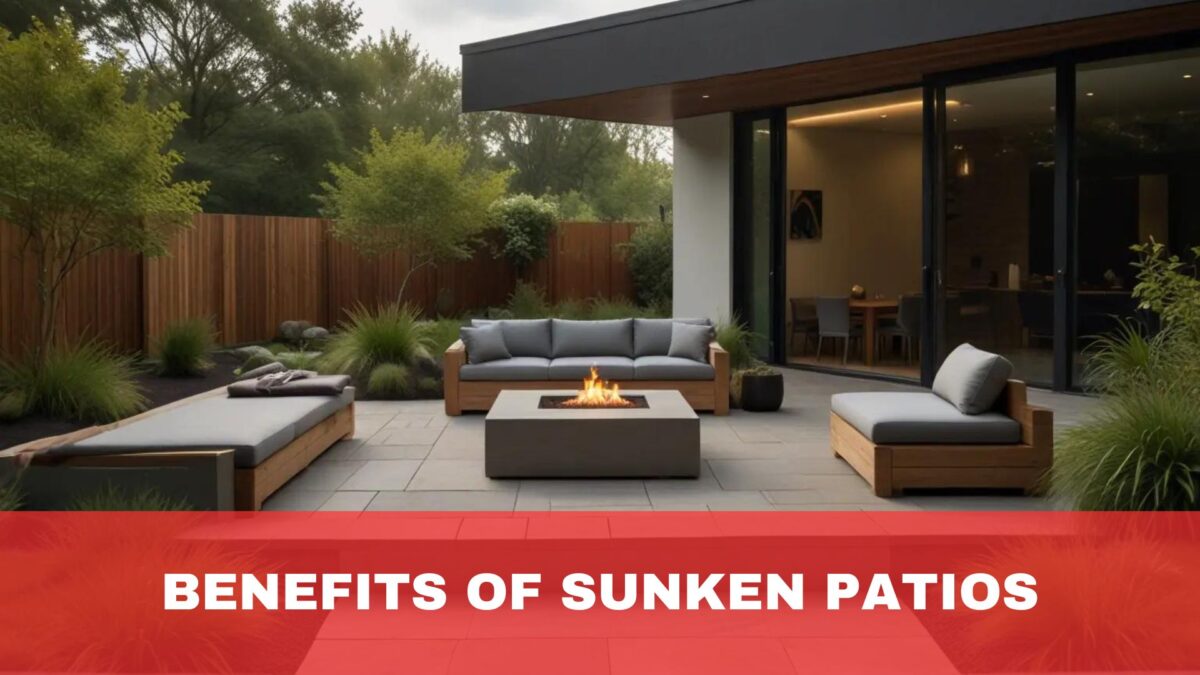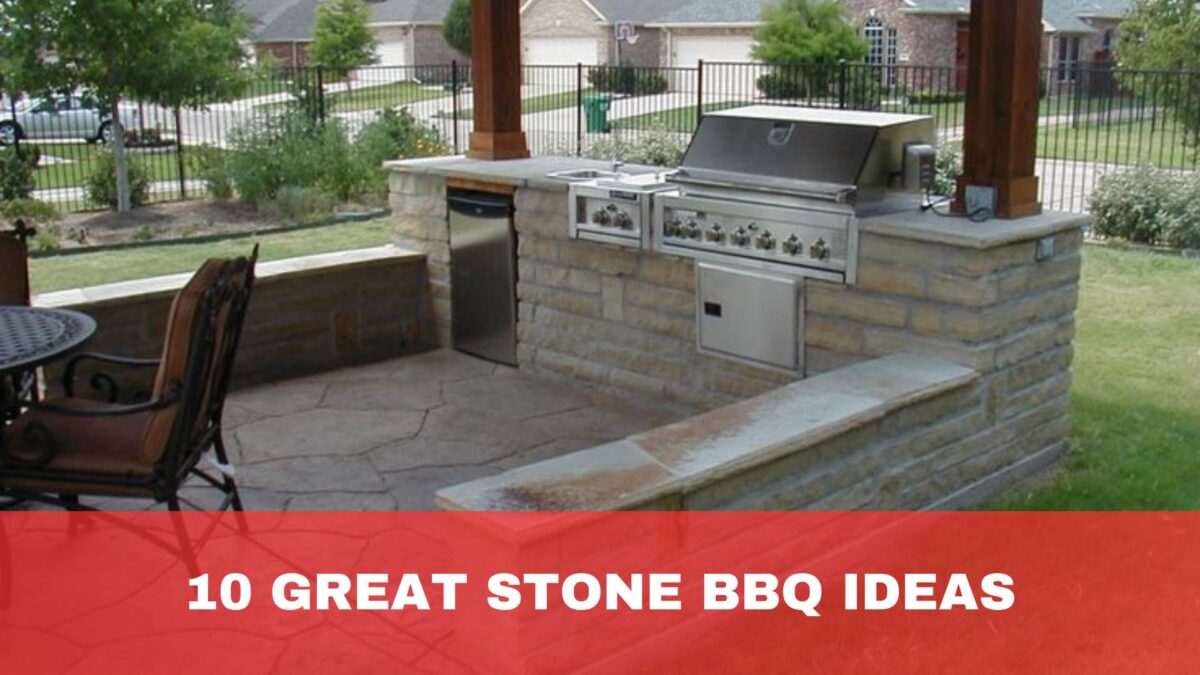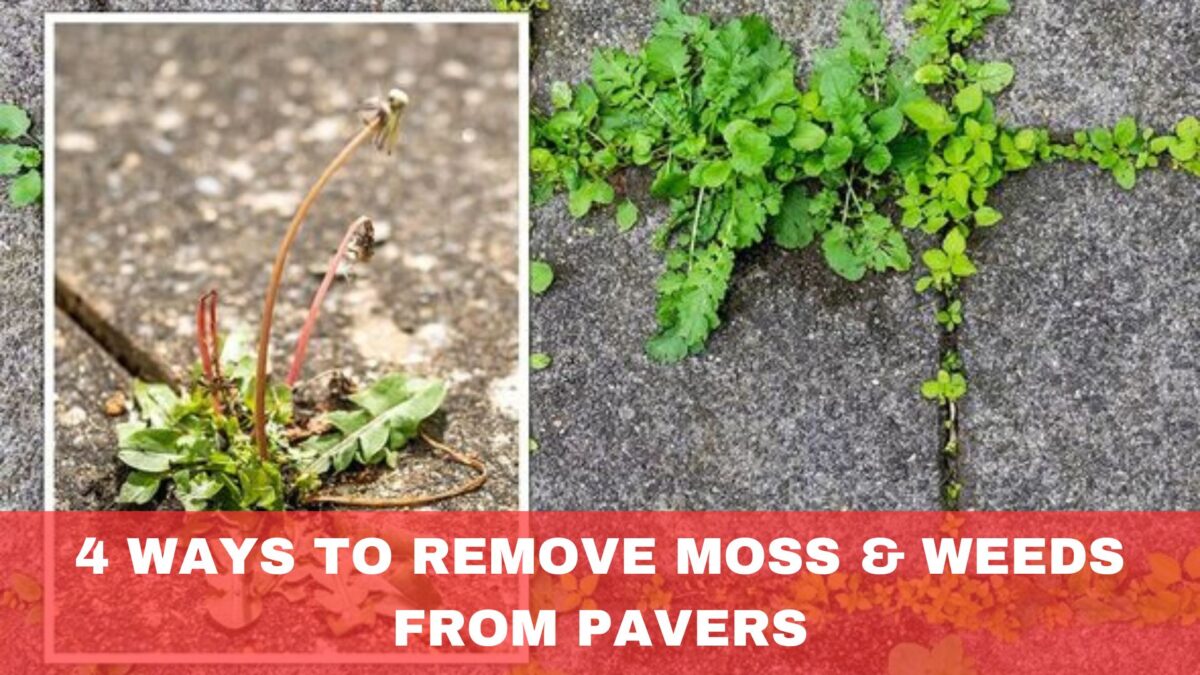Benefits Of Sunken Patios
Struggling to make your outdoor space both functional and stylish? Traditional patios often lack the intimacy and unique aesthetic that can transform your garden into a true sanctuary. With a thoughtful design, your outdoor area might feel comfortable and exciting.
Discover the benefits of sunken patios! This innovative design maximises space and creates a cosy, secluded retreat. Enhance your garden’s appeal while enjoying a practical and visually striking outdoor haven.
1. Enhanced Aesthetic Appeal
A sunken patio can significantly elevate the visual appeal of your outdoor space, creating a distinct and captivating feature.
Unlike traditional patios, the lowered design adds depth and dimension, making your garden look more dynamic and sophisticated. The hollow structure naturally draws the eye, creating a focal point that enhances the landscape.
One key benefit is the ability to play with different levels and layers, creating a seamless transition between indoor and outdoor areas. Surround the sunken patio with raised garden beds, water features, or decorative walls to enhance its visual impact.
Materials are crucial for aesthetic appeal. Opt for natural stones, elegant pavers, or stylish decking to complement your home’s architecture. Incorporate ambient lighting to highlight the depth and create a cosy atmosphere during the evening.
2. Increased Privacy
A vital benefit of a sunken patio is creating a sense of seclusion in your outdoor space. By lowering the patio below ground level, you establish a natural barrier that shields the area from the view of neighbours and passers-by.
The enclosed nature of a sunken patio also helps to reduce noise from the surrounding environment. The walls around the patio serve as a buffer, blocking out unwanted sounds and creating a more tranquil atmosphere. This makes the space ideal for relaxation, entertaining guests, or spending quality time with family.
To further enhance privacy, consider incorporating tall plants, trellises, or decorative screens around the perimeter. These elements add to the aesthetic appeal and provide additional layers of privacy.
3. Improved Shelter and Wind Protection
One of the standout benefits of a sunken patio is its ability to provide enhanced shelter and wind protection, making your outdoor space more comfortable and usable throughout the year.
By design, the lowered structure offers natural protection from the elements, as the surrounding walls block wind and help maintain a more stable temperature within the patio area.
The hollow design reduces wind flow, allowing you to enjoy outdoor space even on breezy days. This makes it an ideal setting for dining, relaxing, or entertaining guests without the disruption of solid winds.
Additionally, the enclosed nature of a sunken patio can provide some protection from rain and harsh sunlight. The surrounding walls can be enhanced with canopies or pergolas to offer further shelter, creating a versatile outdoor area for various weather conditions.
4. Versatility in Design
A sunken patio offers remarkable versatility in design, allowing you to create a unique and personalised outdoor space. One key advantage of this type of patio is the ability to incorporate various architectural elements and materials to suit your aesthetic preferences and functional needs.
The lowered structure provides an excellent opportunity to integrate multiple levels and zones within the same area. Within the sunken patio’s confines, you can create distinct spaces for dining, lounging, and entertaining.
This multi-functional approach maximises the use of space and enhances the overall layout of your garden.
Additionally, the design options for a sunken patio are virtually limitless. You can choose from various materials, such as natural stone, brick, concrete, or wood, each offering a different look and feel. Incorporate built-in seating, fire pits, or water features to add functionality and aesthetic appeal.
Lighting also plays a crucial role in enhancing the versatility of a sunken patio. Installing ambient lighting, spotlights, or lanterns allows you to create different moods and extend the space’s usability into the evening.
5. Better Acoustic Properties
One key benefit of a sunken patio is its superior acoustic properties, which allow for a peaceful outdoor environment. The lowered design reduces noise pollution, as the surrounding walls block and absorb sound.
This structure is particularly beneficial in urban settings where external noise is a disturbance. The walls shield you from unwanted sounds and enhance desired noises, like conversations or a water feature, creating an intimate atmosphere.
Using sound-absorbing materials like stone or brick can further improve acoustics. Adding vegetation and soft furnishings helps dampen sound, contributing to a cosy feel.
6. Optimised Space Utilisation
Transforming your garden into a multifunctional haven is possible with a sunken patio, which offers an intelligent solution for optimised space utilisation. By creating additional living space below ground level, you can maximise your garden’s potential without expanding its footprint, especially in smaller or urban areas.
The hollow design allows for multiple levels and zones within the same area, enabling specific dining, lounging, and entertaining sections. This multi-functional approach maximises space efficiency, transforming your garden into a versatile outdoor living area.
The walls of a sunken patio can be used for built-in seating, planters, or storage, further enhancing functionality. Incorporating vertical elements and lighting into the walls saves space while adding aesthetic appeal.
7. Potential for Enhanced Property Value
Investing in a sunken patio can significantly enhance your property’s value. It offers a unique and attractive feature that sets your home apart. This distinctive design element improves the aesthetic appeal of your garden and adds functional and desirable outdoor living space.
A well-designed sunken patio creates a luxurious and intimate environment, which can be a significant selling point for potential buyers.
The added privacy, improved acoustics, and versatile design make it a sought-after feature in the real estate market. Homes with unique outdoor spaces often command higher prices and attract more interest, giving you an edge in a competitive market.
Additionally, a sunken patio’s durability and low maintenance, especially when built with high-quality materials like stone or concrete, further increase its appeal.
Potential buyers appreciate outdoor spaces that require minimal upkeep while providing maximum enjoyment. Moreover, the ability to customise the patio with features like built-in seating, fire pits, or water elements can make your property even more attractive.
8. Increased Safety for Children and Pets
A sunken patio offers significant safety benefits for families with children and pets. The lowered design creates a defined, enclosed area, reducing the risk of children and pets wandering off unsupervised. This natural barrier provides added security, giving parents peace of mind.
A sunken patio’s enclosed nature helps prevent accidental falls from elevated areas, making it safer than raised decks. The play area at ground level minimises the risk of injuries from falls. The surrounding walls can also protect against hazards like garden tools or furniture.
Incorporating non-slip surfaces and rounded edges enhances safety by preventing trips and falls. The hollow design also keeps toys and play equipment contained, reducing clutter.
9. Enhanced Social and Entertainment Space
A sunken patio creates an ideal social gathering and entertainment setting, offering a unique and inviting atmosphere. The lowered design forms a cosy, intimate space that encourages conversation and interaction, perfect for hosting parties or casual get-togethers.
The enclosed environment provides a sense of seclusion, helps to contain noise, and ensures that celebrations do not disturb neighbours. Features such as built-in seating, fire pits, or outdoor kitchens enhance the patio’s functionality and appeal, making it versatile for various activities.
Strategically placed ambient lighting can create a warm, inviting atmosphere, extending the space’s usability into the evening.
Conclusion
A sunken patio transforms your outdoor space into a sophisticated retreat, offering privacy, enhanced aesthetics, and a seamless connection with nature. Ready to elevate your garden? Start designing your sunken patio today and experience its unparalleled benefits to your home. Explore our design services to bring your vision to life.





